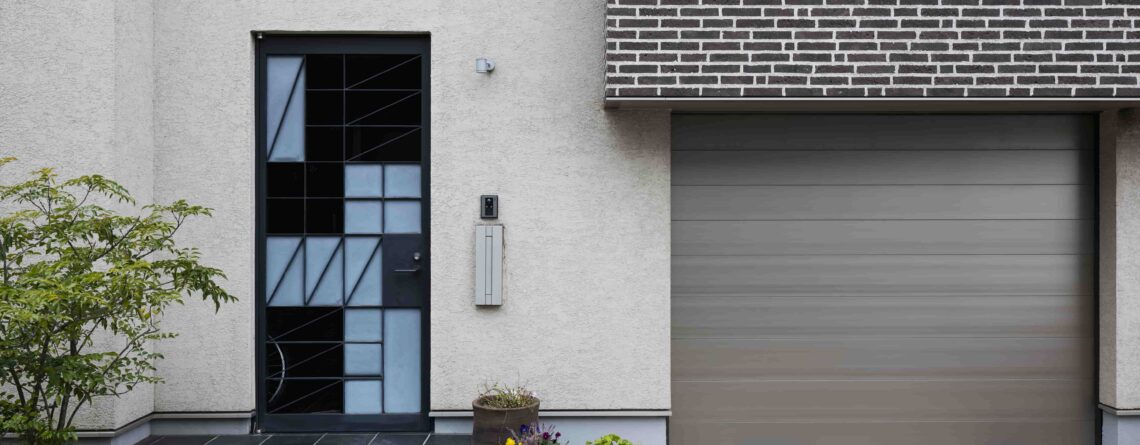Understanding Garage Door Sizes: A Comprehensive Guide
When it comes to selecting the ideal garage door for your home, size is one of the most crucial factors to consider. Garage doors come in a variety of sizes, catering to different types of vehicles and the architectural style of your home. Choosing the correct size not only enhances the aesthetic appeal of your home but also ensures ease of use and practicality. In this article, we will delve into the specifics of garage door sizes, helping you make an informed decision. We’ll explore common dimensions, factors influencing your choice, and tips for measuring your garage accurately.
Standard Garage Door Sizes
Single Car Garage Doors
The most common width for a single car garage door is 8 feet. However, options may range between 7 to 10 feet in width. The standard height for these doors typically falls between 7 and 8 feet. While 8×7 feet is a widely accepted standard, selecting a slightly larger dimension can provide additional space for maneuvering, especially if you own a bigger vehicle like an SUV.
Double Car Garage Doors
Double car garage doors typically accommodate two vehicles. These doors are generally 16 feet wide, but they can range from 12 to 20 feet depending on your needs. The standard height remains at 7 to 8 feet. A double car garage is an excellent option for households with multiple vehicles or those needing extra storage space.
RV Garage Doors
For those who own recreational vehicles, RV garage doors are designed to meet the specific height and width requirements of such large vehicles. The width of these doors can range from 10 to 14 feet, with heights between 12 and 16 feet. These doors are built taller to provide ample clearance for larger vehicles, taking into account roof-mounted equipment like antennas and air conditioners.
Read more: Silence Your Old Garage Door: Upgrading to a Quiet Opener System with Versatile Door
Factors Affecting Garage Door Size Selection
Vehicle Size
The most obvious factor influencing garage door size is the size of your vehicle(s). SUVs, trucks, and RVs require larger clearance, dictating a need for wider or taller garage doors. If you plan on upgrading to a larger vehicle in the future, consider opting for a slightly larger door to eliminate future compatibility concerns.
Home Architecture
The architectural design of your home and garage will naturally guide your garage door size decision. The need to maintain aesthetic balance and proportion can sometimes limit your choices. Architects often design garages integrated seamlessly into the structure of the house, and oversized or undersized doors might detract from the overall curb appeal.
Storage Needs
If you plan on using your garage for more than parking your vehicles, consider your storage needs. Ample space to store gardening equipment, bicycles, or seasonal decorations may necessitate wider or taller garage doors to facilitate easy access.
Local Regulations
Before selecting and installing a new garage door, check with your local municipality or homeowner’s association regarding any regulations or restrictions on garage door sizes. Some areas have specific codes or community guidelines that influence the types and sizes of garage doors you can install.
Tips for Measuring Your Garage Door Opening
Before purchasing a new garage door, precise measurements are essential. Here’s a step-by-step guide:
1. Measure Width: Using a tape measure, determine the width of the garage door opening from side to side at its widest point. Record this measurement to ensure the door will fit across the entire opening.
2. Measure Height: Measure the height of the garage door opening from the floor to the lowest point of the top frame. Ensure this height accommodates any ceiling-mounted obstructions like light fixtures.
3. Check for Headroom: Measure the “headroom,” or space between the top of the door opening and the ceiling or any obstructions. Standard headroom requirements start at about 12 inches but vary depending on the door type and mechanism.
4. Assess Side Room: Determine the side room available for the garage door tracks. At least 3.75 inches is typically needed on each side.
5. Verify Backroom Space: Ensure there is sufficient space from the garage door opening to the back wall of your garage. This is especially crucial for sectional doors that require additional backroom space to open fully.
Custom Garage Door Sizes
Sometimes standard sizes just don’t meet your needs, and a custom garage door becomes the ideal solution. Whether your garage opening is unique due to architectural design, or simply to accommodate specialized use, custom doors provide flexibility in size, style, and material. While custom doors may involve a higher investment, they ultimately allow for a tailored look and function for your home’s facade.
The Importance of Professional Installation
Even the highest-quality garage door will fall short of expectations if not installed correctly. Professional installation ensures that doors function smoothly and look good. Installation experts possess the skills to handle complications that may arise during fitting, thus avoiding damage both to the door and your garage structure. Prioritize hiring a reputable service provider for installation to optimize performance and longevity of your new garage door.
If you’re considering upgrading or installing a new garage door, look no further than Versatile Door, your trusted partners in Port Coquitlam. We offer a wide range of door sizes and styles to match your unique needs and aesthetics. Our team of professionals is dedicated to providing top-notch installation services, ensuring your garage door functions seamlessly for years to come.
Contact Versatile Door today to discuss your garage door project and enjoy a service that combines quality, efficiency, and unmatched customer satisfaction.











